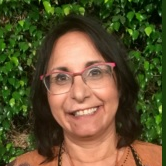Innovations and Contemporary Perspectives in Chemistry Education
A special issue of Education Sciences (ISSN 2227-7102).
Deadline for manuscript submissions: closed (15 November 2019) | Viewed by 40267
Special Issue Editor
Interests: socio-scientific issues; teacher professional development
Special Issues, Collections and Topics in MDPI journals
Special Issue Information
Dear Colleagues,
The special issue of the journal Education Sciences is devoted to a substantial contemporary introduction and discussion of chemistry education.
As a guest editor, I invite you to submit a paper for publication in this special issue.
In this issue, we wish to present quality research, that extend our methodological, theoretical and practical understanding, and have the likelihood of informing education policy and practice, about chemistry education. Research studies, extended reviews in chemistry education, and assessment of the effectiveness of innovative practices in the teaching of chemistry, are welcome.
Additionally, Education Sciences invites commentaries and original opinion pieces and/or analysis of issues and events of concern to chemistry education scholars that have international resonance.
Suggested topics:
- Chemical Literacy – what is it, what is its benefit to future citizens?
- Chemistry Education: Key ideas-thinking skills-values-habits of mind
- Chemistry Education pedagogies: state of the art
- Chemistry in context
- The Laboratory in chemistry Education
- Teaching chemistry in a digital age
- Diagnostic Assessment in Chemistry
- Innovative Curriculum Development,
- Chemistry Teacher Education: pre-service, in-service, PCK, TPACK
- Green Chemistry, Chemistry & Environmental Education, Chemistry & Sustainability
- The role of chemical language in chemistry education
- The merit of teaching the history of chemistry
Dr. Yael Shwartz
Guest Editor
Manuscript Submission Information
Manuscripts should be submitted online at www.mdpi.com by registering and logging in to this website. Once you are registered, click here to go to the submission form. Manuscripts can be submitted until the deadline. All submissions that pass pre-check are peer-reviewed. Accepted papers will be published continuously in the journal (as soon as accepted) and will be listed together on the special issue website. Research articles, review articles as well as short communications are invited. For planned papers, a title and short abstract (about 100 words) can be sent to the Editorial Office for announcement on this website.
Submitted manuscripts should not have been published previously, nor be under consideration for publication elsewhere (except conference proceedings papers). All manuscripts are thoroughly refereed through a double-blind peer-review process. A guide for authors and other relevant information for submission of manuscripts is available on the Instructions for Authors page. Education Sciences is an international peer-reviewed open access monthly journal published by MDPI.
Please visit the Instructions for Authors page before submitting a manuscript. The Article Processing Charge (APC) for publication in this open access journal is 1800 CHF (Swiss Francs). Submitted papers should be well formatted and use good English. Authors may use MDPI's English editing service prior to publication or during author revisions.
Keywords
- chemical Literacy
- conceptual knowledge
- pedagogy
- laboratory in chemistry Education
- virtual teaching
- assessment
- curriculum
- Teacher Education
- sustainability





